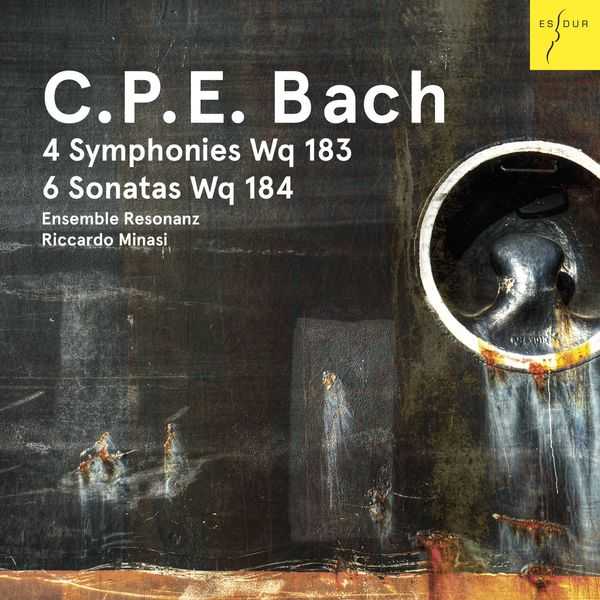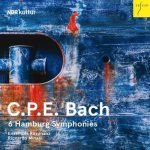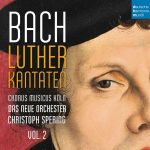

Composer: Carl Philipp Emanuel Bach
Performer: Ensemble Resonanz
Conductor: Riccardo Masahide Minasi
Format: FLAC (tracks)
Label: Es-Dur
Catalogue: ES2070
Release: 2016
Size: 596 MB
Recovery: +3%
Scan: cover
Symphony in G major, Wq. 183 / 4 (H666)
01. I. Allegro assai
02. II. Poco andante
03. III. Presto
04. Sonata in D Major, Wq. 184 / 1, H. 629
05. Sonata in F Major, Wq. 184 / 2, H. 630
Symphony in E flat major, Wq. 183 / 2 (H664)
06. I. Allegro di molto
07. II. Larghetto
08. III. Allegretto
09. Sonata in E-Flat Major, Wq. 184 / 4, H. 632
10. Sonata in G Major, Wq. 184 / 3, H. 631
Symphony in D major, Wq. 183 / 1 (H663)
11. I. Allegro di molto
12. II. Largo
13. III. Presto
14. Sonata in A Major, Wq. 184 / 5, H. 633
15. Sonata in C Major, Wq. 184 / 6, H. 634
Symphony in F major, Wq. 183 / 3 (H665)
16. I. Allegro di molto
17. II. Larghetto
18. III. Presto
As Carl Philipp Emanuel Bach composed his “Orchestral Symphonies with twelve obbligato parts” in 1775/1776, Europe was caught up in Werther fever, a movement focussed on expressing one’s emotions theatrically whilst the first signs of turmoil in politics and economics were simultaneously raising their heads.
The modern symphonic orchestra can trace its roots to this period when the basic string orchestra formation was extended with wind instruments, thereby giving the Sturm and Drang movement (loosely translated as Storm and Stress) a much wider soundscape and greater range of dynamics with which to express itself.
With his Wq 183 orchestral symphonies, C.P.E. Bach set himself the challenge of writing symphonies for a full orchestra featuring string and wind sections. Horns and woodwind were no longer a mere afterthought; they did not simply double up and reinforce the string parts, rather they were given their own specific function from the outset. With this in mind, and the highly emotional states of tension and release, these compositions were truly pioneering and made tone, dynamics and harmony into central musical concepts. The four symphonies are veritable fireworks of emotions: full of suspense, poignancy and exuberant joy.
C.P.E. Bach’s oeuvre provides the opportunity of re-discovering charming pieces, such as the six small sonatas for wind instruments (two horns, two flutes, two clarinets and bassoon) Wq 184, composed in 1775 in Hamburg, heard for the first time in this recording.



